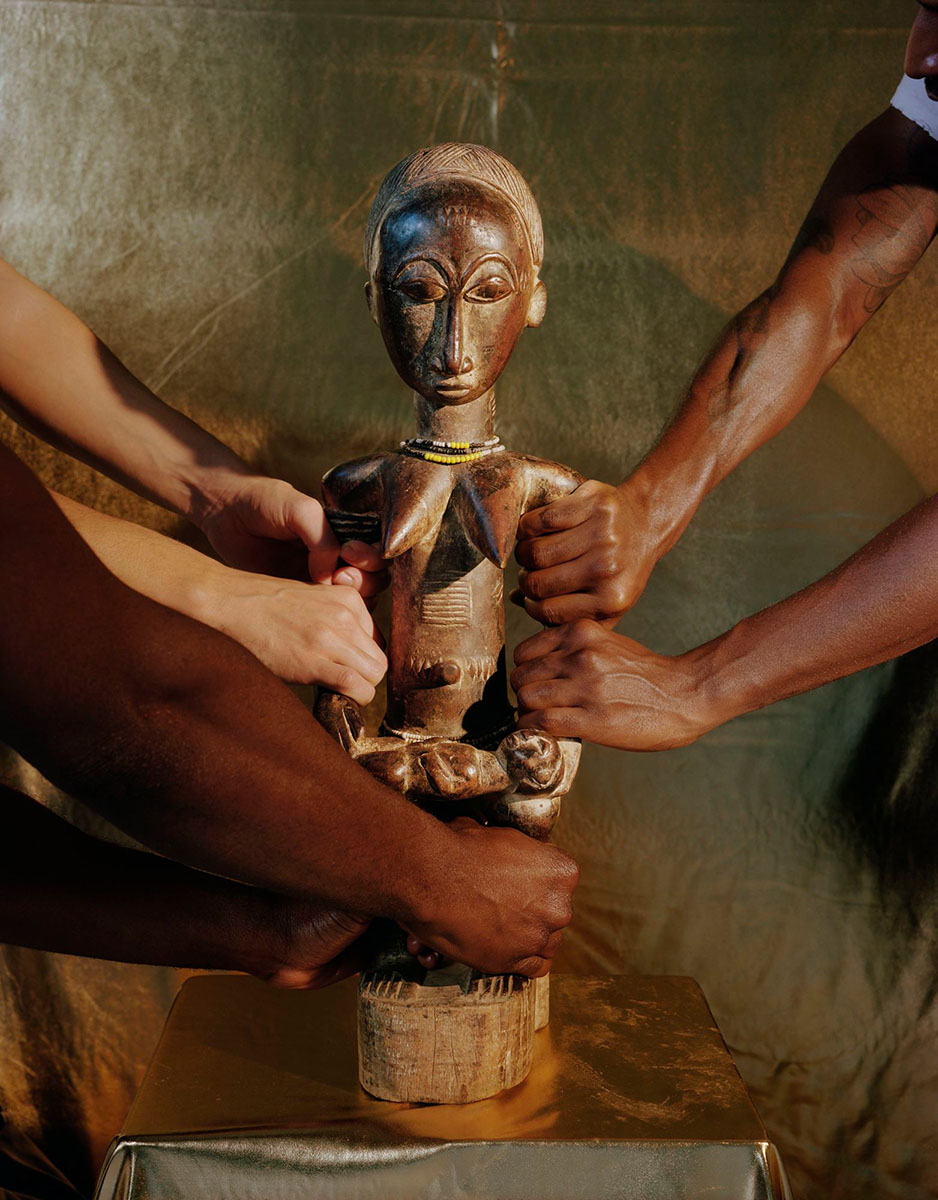The artist’s exhibition A Sidelong Glance at the Brooklyn Museum, New York, focuses on the colonialist legacy of collecting continental and diasporic African objects

John Edmonds’s photographs in his first institutional solo show are alluring and seductive. The artist’s previous subjects have included the street fashion of Black men and his own queer artistic milieu, reframing Eurocentric art-historical tropes to include Black queer desire. But here Edmonds turns his lens to a different form of desire. The photographs primarily show African masks and totems – culled from the Brooklyn Museum’s own vast collection, as well as from the homes of the artist’s friends and peers – centred alone or staged with said friends and peers. The subject here is the desire of the collector and the complicated colonialist legacy of collecting continental and diasporic African objects.
These formally simple tableaux are deeply researched, as evidenced by Edmonds’s large folded free newsprint poster featuring a reproduction of his photograph Whose Hands? (2019) – showing several arms grabbing a statue made by the Baule people – and 521 notes about the Baule culture, their religious beliefs, use of masks and treatment of sculpture, sourced from Susan Vogel’s Baule: African Art Western Eyes (1997) and Alain-Michel Boyer’s Baule: Visions of Africa (2008). On the back wall of the exhibition hangs a suite of eight photographs of African sculptures donated by the Ralph Ellison estate to the Brooklyn Museum, including Baule, Hemba and Senufo figures. In 2019 Edmonds was invited to photograph this collection, and the resulting images present the wooden statues glowing against an iridescent backdrop, spotlighted and regal. In the current rethinking of the colonialist collecting, cataloguing and exhibition practices of institutions, Edmonds’s work asks a more nuanced question, not just about the pitfalls of museum collecting, but also about collecting by private individuals. Ellison is celebrated as the author of the novel Invisible Man (1952), but was also later criticised for a perceived lack of engagement with the civil rights movement. The images of his collection question these objects as signifiers in a complicated heritage: how did Ellison live with these objects? Did they glow in his home as totems of a long-lost lineage?
In the black-and-white photograph Anatolli & Collection (2019), a buff shirtless Black man sits level with, according to the wall text, Edmonds’s own collection of African art. The angled spotlight casts the objects mostly in shadow but illuminates the man’s torso and shoulders. He looks at this collection – but we look at him. Here, as with the objects from the Ellison collection, the statues glisten, but much less so than the eroticised male figure. Anatolli’s body is treated much like an object as well, making visible a desire for bodies. This calls to mind the homoerotic desire present in Edmonds’s previous work, but also the long history of Western ownership over Black bodies.
John Edmonds, A Sidelong Glance is on view at Brooklyn Museum, New York, through 8 August